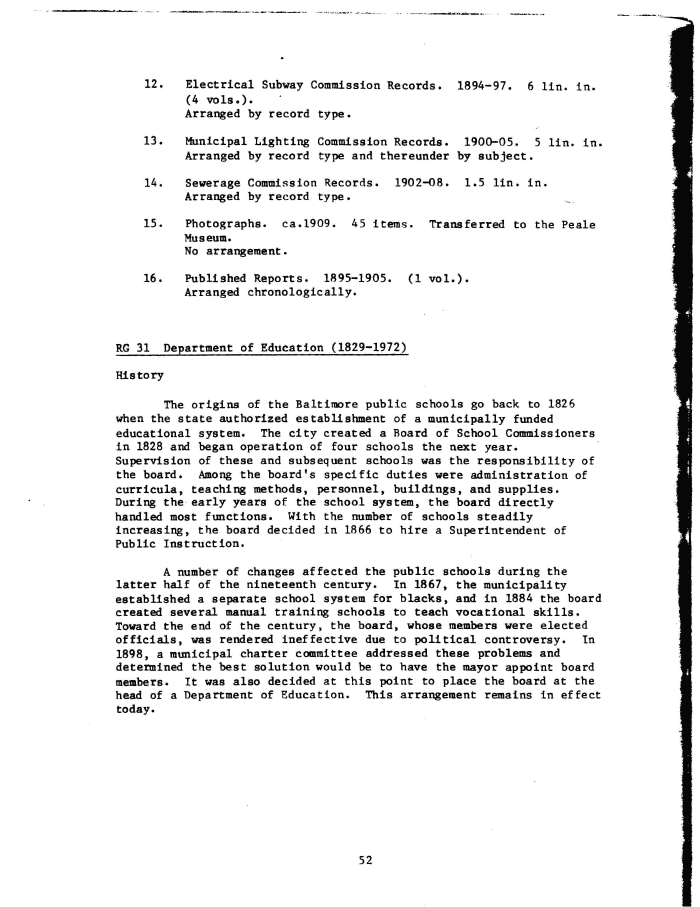|
12. Electrical Subway Commission Records. 1894-97. 6 lin. in.
(4 vols.)«
Arranged by record type.
13. Municipal Lighting Commission Records. 1900-05. 5 lin. in,
Arranged by record type and thereunder by subject.
14. Sewerage Commission Records. 1902-08. 1.5 lin. in.
Arranged by record type.
15. Photographs, ca.1909. 45 items. Transferred to the Peale
Museum.
No arrangement.
16. Published Reports. 1895-1905. (1 vol.).
Arranged chronologically.
RG 31 Department of Education (1829-1972)
History
The origins of the Baltimore public schools go back to 1826
when the state authorized establishment of a municipally funded
educational system. The city created a Board of School Commissioners
in 1828 and began operation of four schools the next year.
Supervision of these and subsequent schools was the responsibility of
the board. Among the board's specific duties were administration of
curricula, teaching methods, personnel, buildings, and supplies.
During the early years of the school system, the board directly
handled most functions. With the number of schools steadily
increasing, the board decided in 1866 to hire a Superintendent of
Public Instruction.
A number of changes affected the public schools during the
latter half of the nineteenth century. In 1867, the municipality
established a separate school system for blacks, and in 1884 the board
created several manual training schools to teach vocational skills.
Toward the end of the century, the board, whose members were elected
officials, was rendered ineffective due to political controversy. In
1898, a municipal charter committee addressed these problems and
determined the best solution would be to have the mayor appoint board
members. It was also decided at this point to place the board at the
head of a Department of Education. This arrangement remains in effect
today.
52
|

